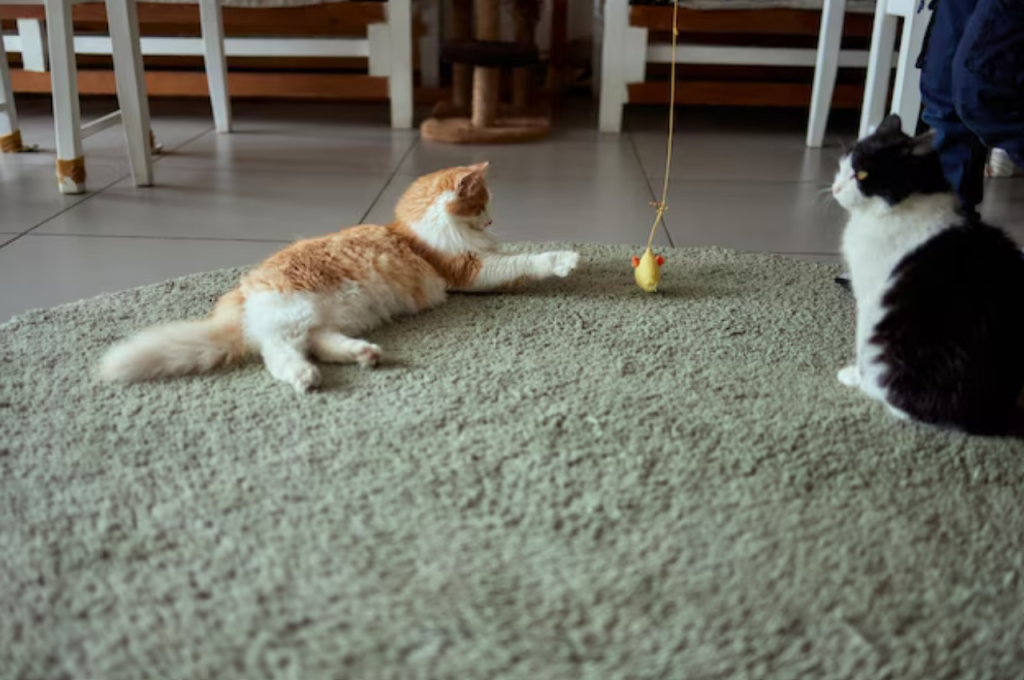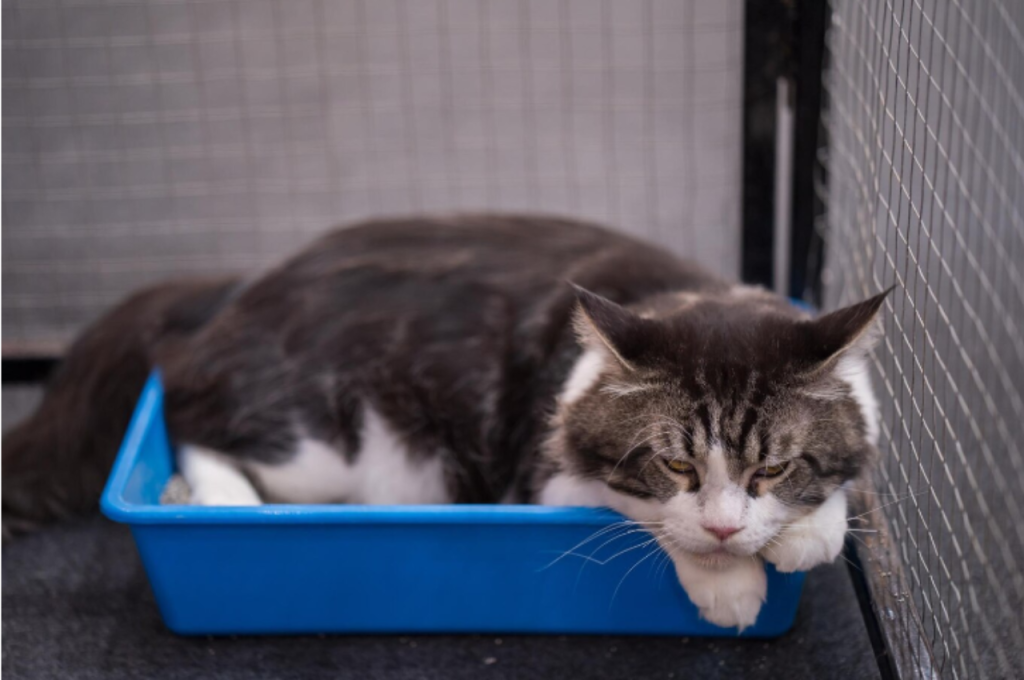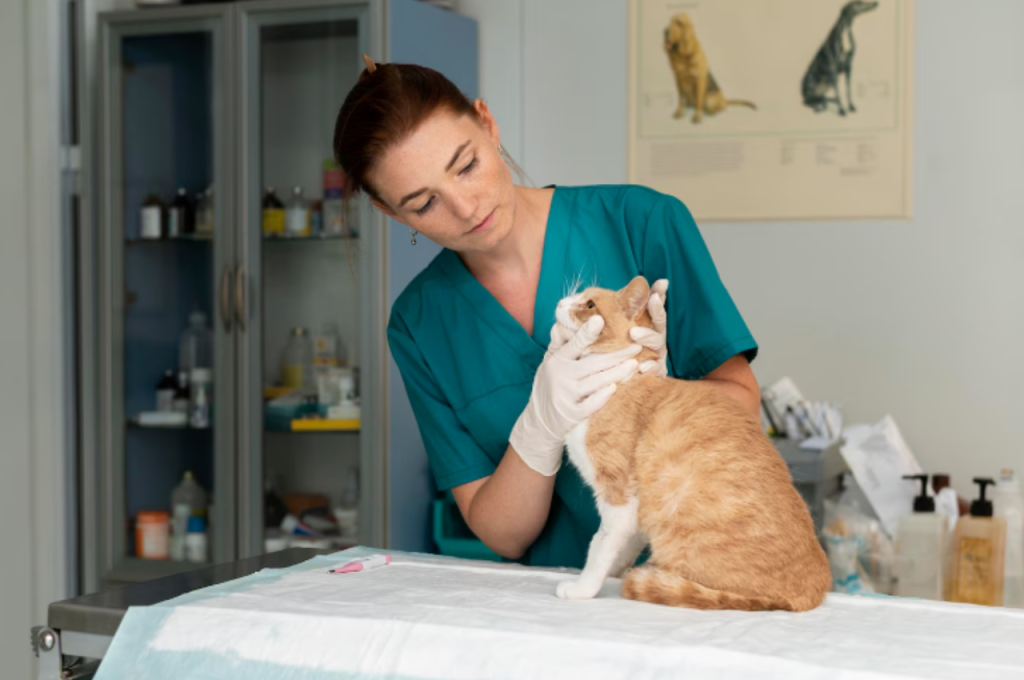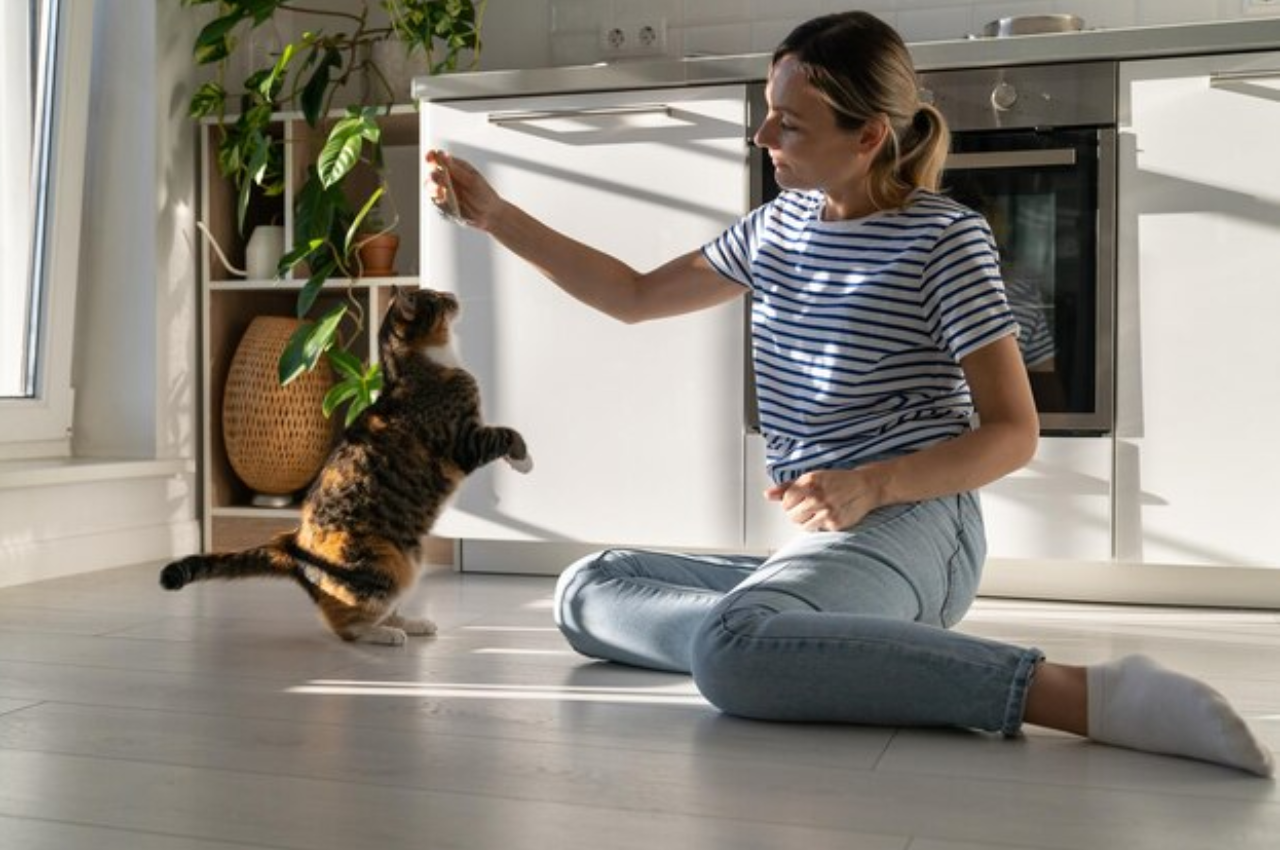To house train a cat, establish a designated litter box area and introduce your cat to it consistently. Provide a clean and easily accessible litter box, and ensure it is in a quiet and private location.
Gradually transition your cat to using the litter box by placing them in it after meals or naps, and praising them when they use it. If accidents occur, clean them thoroughly to remove any lingering odor. With patience and consistency, your cat will learn to use the litter box consistently. House training a cat can be a challenging task, but with the right approach and patience, it is definitely achievable. Whether you have a new kitten or an adult cat, teaching them to use a litter box is essential for maintaining a clean and hygienic living environment. By following some simple steps and being consistent in your training efforts, you can successfully house-train your feline friend.
We will explore effective techniques to help you teach your cat to use the litter box, ensuring a harmonious and mess-free coexistence in your home. So let’s dive in and discover the secrets to successful cat house training.
Introduction to House Training Cats
House training a cat is an essential step in ensuring a clean and harmonious living environment. Whether you have a new kitten or an older cat, teaching them to use a litter box or go outdoors can help prevent accidents and maintain a hygienic space.

Why It’s Important
Teaching your cat proper bathroom habits is crucial for a stress-free coexistence. By providing them with the necessary guidance, you can avoid soiling around the house and promote a healthy routine for your feline companion.
What You’ll Need
Preparing for the house training process requires a few essential items. These include a litter box, suitable litter, cleaning supplies, and possibly a leash or harness if you plan to train your cat to go outdoors. Additionally, patience and consistency are key components for successful house training.
Getting Started with Litter Training
When it comes to house training your cat, getting started with litter training is the first and most crucial step. Creating the right environment and providing the necessary tools will help ensure a successful litter training experience for your feline friend.
Choosing The Right Litter Box
When selecting a litter box, it’s important to consider the size and accessibility. The litter box should be large enough for your cat to comfortably move around and turn in. Additionally, if you have a kitten, ensure the sides of the litter box are low enough for easy entry and exit.
Selecting The Perfect Litter
Choosing the right litter is essential for your cat’s comfort and hygiene. Look for unscented, clumping litter, as it is easier to clean and helps control odors. It’s important to avoid scented litter, as the strong fragrance may deter your cat from using the litter box.
The First Steps in Litter Training
When introducing your cat to the litter box, it’s crucial to place it in a quiet and easily accessible location. Choose a spot that your cat can easily find, and ensure it’s away from their food and water bowls. This will help your cat associate the litter box with elimination. Also, make sure the box is large enough for your cat to comfortably turn around.
Establishing a routine is essential for successful litter training. Start by placing your cat in the litter box after meals, naps, and playtime, as these are the times when they are most likely to need to be eliminated. Consistency is key in reinforcing the litter box as the designated elimination area.
Addressing Common Litter Training Issues
- Use enzymatic cleaners to remove odors.
- Refrain from punishing your cat for accidents.
- Try different litter types and box placements.
- Observe and respect your cat’s preferred litter box style.
Advanced Litter Training Tips
Discover effective advanced litter training tips to successfully house-train a cat. Implement consistent routines and positive reinforcement techniques for optimal results. Establish a comfortable and accessible litter box area to encourage your feline friend to use it regularly.
House training a cat can be a challenging task, especially when it comes to older cats or rescue cats. But with advanced litter training tips, you can easily teach your feline friend to use the litter box without any hassles. In this section, we will discuss some effective ways to litter-train older cats and rescue cats.
Teaching Older Cats
If you have an older cat that has never been litter-trained, don’t worry. It is not too late to teach them. Here are some tips to get you started:
- Start by placing the litter box in a quiet and private area of your home.
- Encourage your cat to use the litter box by placing them in it after meals or naps.
- If your cat is not using the litter box, try changing the type of litter or the size of the box.
- Praise and reward your cat when they use the litter box correctly.
Litter Training Rescue Cats
Rescue cats can be a bit more challenging to litter train, especially if they have had negative experiences with litter boxes in the past. Here are some tips to help you litter train a rescue cat:
- Provide multiple litter boxes in different locations around your home.
- Use a litter box with low sides, making it easy for your cat to enter and exit.
- Use unscented and soft litter to make the litter box more inviting.
- Use positive reinforcement techniques to encourage your cat to use the litter box.
In conclusion, advanced litter training tips can help you teach your cat to use the litter box with ease. Whether you have an older cat or a rescue cat, these tips will help you overcome any litter box challenges you may face. With patience, persistence, and positive reinforcement, your feline friend will be using the litter box in no time.
Beyond The Litter Box: Basic Home Manners
Cats can be trained to exhibit good behavior beyond using the litter box. Teaching them basic home manners is crucial for a harmonious living environment.

Scratching Furniture
Scratching furniture is a common behavior in cats that can be managed with proper house training techniques. To house-train a cat and discourage scratching, provide designated scratching posts or pads in areas where your cat likes to scratch. Choose a post made of materials like sisal or carpet that mimics the texture of furniture. Positive reinforcement, such as treats or praise, can encourage your cat to use the scratching post instead of furniture. Additionally, cover furniture with protective materials or use deterrent sprays to make them less appealing. Consistency and patience are key in helping your cat develop the habit of scratching only in appropriate areas, and protecting your furniture while fulfilling your cat’s natural instincts.
Jumping on Counters
To house-train a cat and prevent it from jumping on counters, start by making the counters less appealing. Clear any food, and use deterrents like aluminum foil or double-sided tape, which cats dislike. Provide alternative elevated spaces, such as cat trees or shelves, to satisfy their natural urge to climb. Reinforce positive behavior by rewarding your cat when it stays off the counters with treats or affection. Consistency is key, avoid leaving food or enticing items on counters and ensure your cat has plenty of mental and physical stimulation. Gradually, your cat will learn to associate counters with an undesirable experience, helping you establish a house-trained feline.
Maintaining Good Habits
Once your cat is successfully house-trained, it’s important to maintain good habits to prevent any accidents from happening in the future. Here are some key tips to keep in mind:
Regular Cleaning Schedules
Cats are naturally clean animals, so it’s important to keep their litter box clean and odor-free. Set up a cleaning schedule that works for you and your cat’s needs. Some cats may require daily cleaning, while others may only need to have their litter box cleaned once a week. Whatever the schedule, make sure to stick to it consistently. In addition to cleaning the litter box, make sure to clean any accidents that may occur outside of the litter box promptly. Use an enzymatic cleaner to eliminate any odor and prevent your cat from returning to the same spot to eliminate it again.
Monitoring Health Through Litter Box Use
Your cat’s litter box can also provide important information about their health. Keep an eye out for any changes in your cat’s litter box habits, such as using the litter box more frequently or straining to urinate. These could be signs of a urinary tract infection or other health issue. In addition, monitor your cat’s urine and feces for any abnormalities, such as blood or a change in color or consistency. If you notice any of these changes, it’s important to take your cat to the vet for a check-up.
Consistency is Key
Finally, consistency is key when it comes to maintaining good habits for house training your cat. Stick to the same routine and schedule that you used when first training your cat, and make sure to provide plenty of positive reinforcement for good behavior. By following these tips, you can help ensure that your cat remains successfully house-trained and prevent any future accidents from occurring.
Troubleshooting and When to Seek Help
House training a cat can be a challenging task, but troubleshooting can help. Common issues include litter box problems, marking, and accidents. If the problem persists, it may be time to seek help from a veterinarian or animal behaviorist. House training a cat can be a tricky process, and sometimes things don’t go as planned. It’s important to recognize any behavioral issues that may arise and know when to seek help from a veterinarian or cat behaviorist. Here are some tips to troubleshoot any problems you may encounter during the house training process.
Recognizing Behavioral Issues
If your cat is not using the litter box consistently or is displaying other unwanted behaviors, it could be a sign of an underlying issue. Some common behavioral issues that may arise during house training include:
- Urinating or defecating outside of the litter box
- Marking territory
- Scratching furniture or other objects
- Avoiding the litter box altogether
If your cat is exhibiting any of these behaviors, it’s important to address the issue as soon as possible to prevent it from becoming a habit.
Consulting a Veterinarian or a Cat Behaviorist
If you’ve tried everything and your cat is still not using the litter box consistently, it may be time to seek help from a veterinarian or cat behaviorist. A veterinarian can rule out any medical issues that may be causing your cat’s behavior, while a cat behaviorist can help you identify the underlying cause of the problem and provide you with solutions to correct the behavior. It’s important to remember that every cat is different, and what works for one may not work for another. With patience, consistency, and the right tools, you can successfully house-train your cat and prevent any unwanted behaviors from becoming a habit.

Conclusion
Training your cat to use the litter box is achievable with patience and consistency. Providing positive reinforcement and a designated area can help your feline friend learn quickly. Remember to stay calm and avoid punishment to create a positive learning environment. With these tips, you can successfully house-train your cat.
